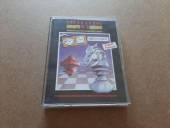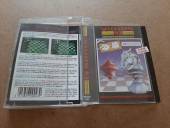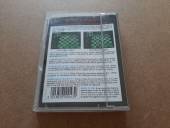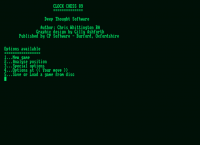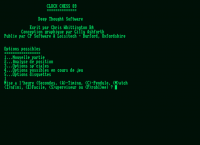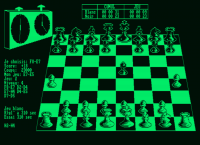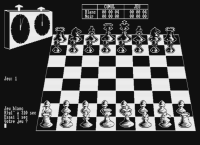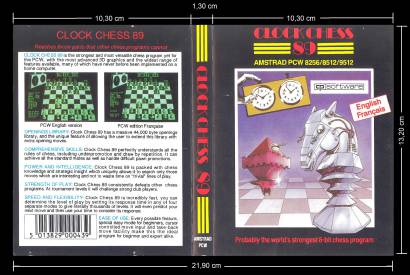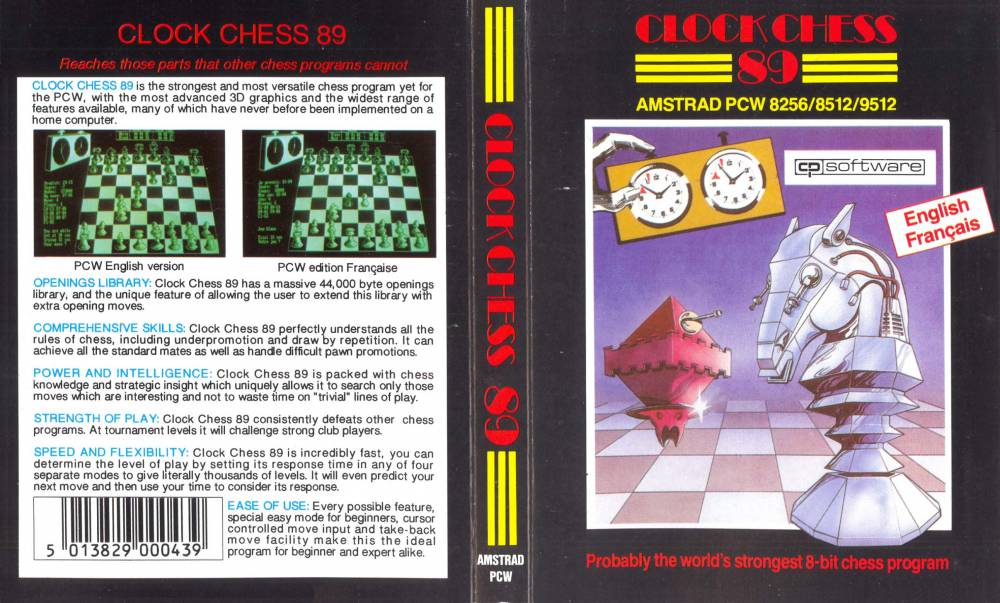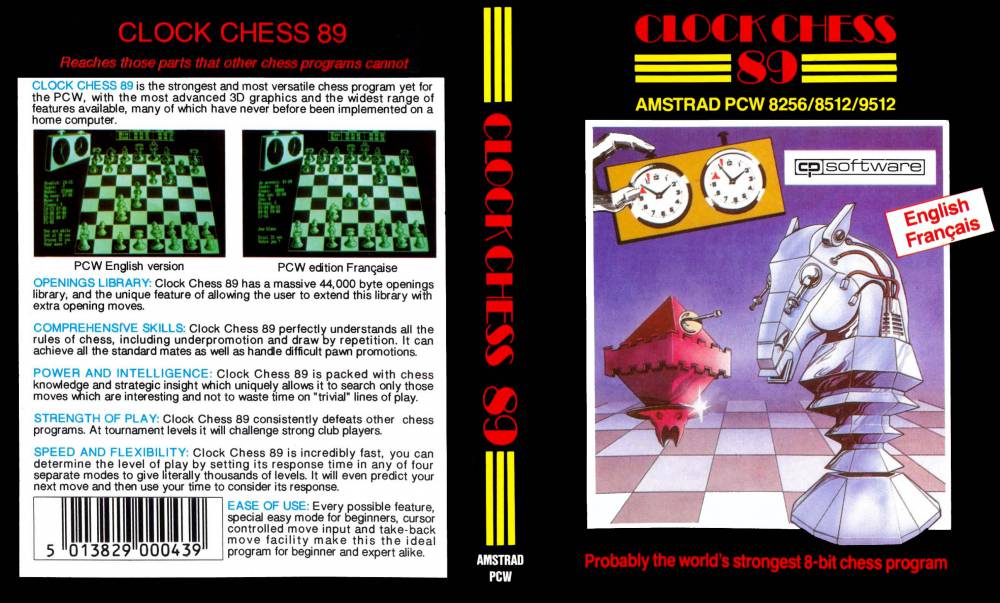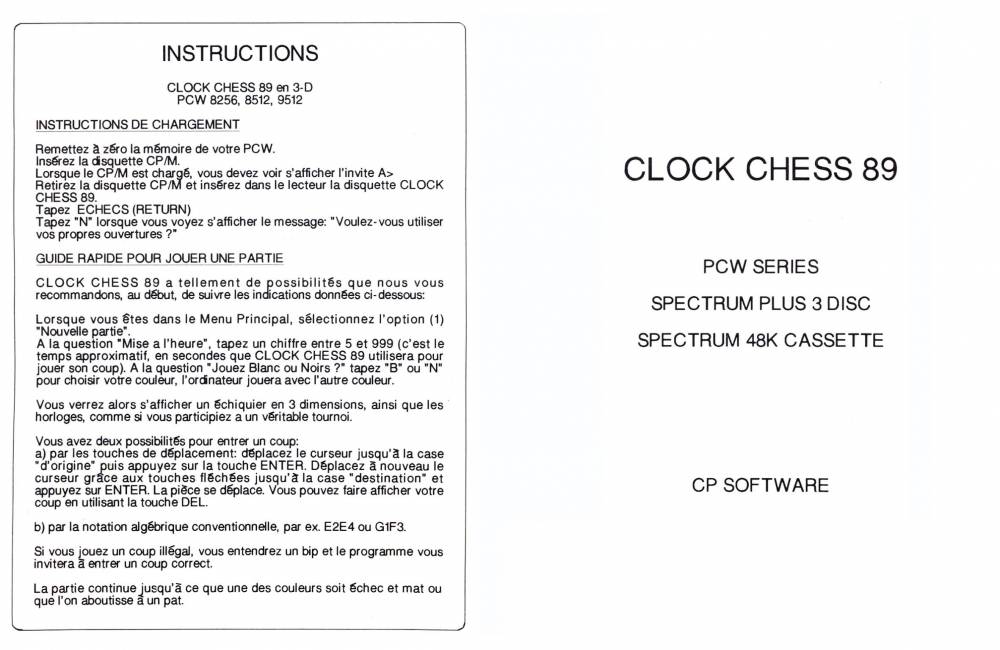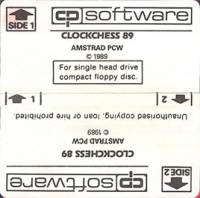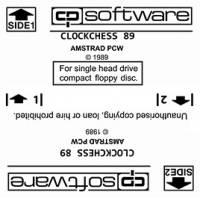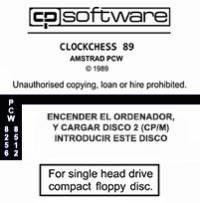Table of Contents
CLOCK CHESS'89
| Company | CP Software |
|---|---|
| Distributor | CP Software |
| Production team | Written by Chris Whittington BA - Graphic Creation and Realization: Gilly Ashforth |
| Year | 1989 |
| Packaging | Transparent methacrylate box 10.60 × 13.40 × 1.50 |
| Compatibility | PCW 8256 - PCW 8512 - PCW 9512 |
| Peripherals | Keyboard |
| Loading | CP/M+ |
| Gender | Board |
| Language | French - English |
| Price | Spain: 3.600 Ptas - England: £19.95 |
| State | preserved |
Screenshots
Description
When we see the cover of the game, we will surely think: “Wow, another chess game …”. But we will soon realize how wrong we are in our half-hearted appreciation. It is not just another game; it is perhaps the most complete and highest level chess program ever made for an 8 bit computer.
The little showiness of the menu of options, as well as the austerity of the presentation of the game almost fooled us. Clock Chess 89 is a game with great content, although its appearance is unappealing. The number of options that we can manipulate before starting the game is considerably high. It is possible to play at a low difficulty level (easy mode), limit the average time of meditation on the computer's play, set the maximum time for a game, play against the clock or against a human opponent, analyze positions, let the computer play alone, reverse the position of the board, see all previous movements, go back a movement already played … Certain options specially designed for big fans are also included, such as the possibility of playing with invisible pieces or changing the computer's tendency to force draws (for example, we can make the computer think that drawing is as bad as losing, try to draw if the position is balanced, or make the computer think that drawing is almost as good as winning).
In any case, it would be appreciated if the menu of options were a little more colorful. In reality, it is practically non-existent and only consists of a line that asks us the option number we want, between 1-7.
Power of the game
As you have already seen by now, the variety of possibilities is tremendously wide. Let's talk about the power of your game. As a sample button, simply comment on some quite illustrative data: Clockchess 89, faced great chess programs of the time, defeating them all. In the instruction booklet it is noted that the results obtained compared to other programs could vary in practice, but there is no doubt that they are indicative regarding the level of play developed by Clockchess 89.
Already immersed in an interesting game, we can handle our pieces in two ways: with the typical algebraic notation or by controlling the cursor. These two options can be used at any time, without the need to select one or the other separately. If we choose to use the cursor, we must move it to the desired part, press ENTER, move it to the chosen position and press ENTER again. This is really comfortable and is pretty close to the type of mouse operation used with more powerful machines with similar games. By the way, if, for some strange mania, you prefer to use the traditional algebraic notation, you will find yourself with a strange difficulty: the coordinates of the board do not appear anywhere. How to play with ease, and even more so when the clock advances inexorably, if we have to calculate by eye at all times our position and to which we want to move? Calm down, do not despair, because by pressing the “z” key you will obtain the desired coordinates.
The screen where the game takes place contains a good number of indicators, located to the left and upper part of the board. Apart from the clocks that mark our time and that of the rival, there are other indicators that show us the number of movements that have been made, the count of positions evaluated, so far, by the computer when it corresponds to play (nodes), the The time we have chosen for the machine to think and the time that the program has decided to take to think of a certain move, the computer's advice for our next move and the number of moves after the current one that the computer is preparing.
Conclusion
A three-dimensional view of the board or a more elaborate and clearer screen in the menu would have been appreciated, but the good chess fan will be grateful that memory has not been wasted on what, after all, are nothing more than superfluous details . Without doubt one of the best programs made for 8 bits.
Packaging
Cover
- Original cover
Here you have the front of the original cover.
- Retouched cover
Its measurements are: Width: 21.90 cm x Height: 13.20 cm.
Manual
Below is the manual printed on double-sided glossy paper Its measurements are Height: 13.00 cm x Length: 20.00 cm.
Discs
Labels
Custom labels to print. Over the years due to its use, the labels are spoiled and lose their color and quality. Now we try to adapt the most similar in the measure of our possibilities, the labels so that they can be printed and replaced or for those who work with a copy of the program and preserve the original disc. Measurement in 3 “height: 7.00 cm - width: 7.10 cm. The first image corresponds to the original label of the game, the second is the same modified label to be able to replace the broken one and the third and fourth images are for 3.5 “discs.
Extras
Download
Game
The disc images, obtained from the original version of Clockchess'89, have been recorded and verified.
- Clock Chess'89 v5.54 (.DSK file compressed in ZIP format)
Manual
Below you can download the Clock Chess'89 game manual or view it online. The manual sheet measures: Width 10.00 cm x Height 13.00 cm.
- Clock Chess'89 Manual (PDF file)

